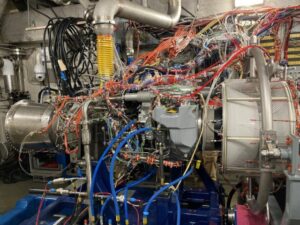Delivery of the Army’s new helicopter engine to the vendors building prototypes for the Army’s Future Attack Reconnaissance Aircraft (FARA) program has been pushed back until spring 2023, the service confirmed to Defense Daily.
The delay, first reported by
Inside Defense, is due to supply chain challenges, according to the Army’s Program Executive Office-Aviation.

Army officials had previously targeted November for delivery of the General Electric Aviation [GE]-built T901 engines, which was developed under the Improved Turbine Engine Program (ITEP).
“The Improved Turbine Engine Program continues to make progress despite a challenged supply chain. Over 95 percent of the FARA engine hardware is on-hand at GE and engine assembly is underway at GE’s Lynn facility. However, due to lingering aerospace supply chain impacts and normal developmental technical challenges, the FARA engine deliveries are delayed until Spring 2023,” PEO Aviation said in a statement to Defense Daily.
GE Aviation was awarded a $517 million contract in February 2019 to develop its T901 engine for ITEP, which will power the Army’s AH-64 Apache and UH-60 Black Hawk helicopters as well as the future FARA platform (Defense Daily, Feb. 1, 2019).
The Army has selected Bell’s [TXT] 360 Invictus and Sikorsky’s [LMT] Raider X designs for the FARA competitive prototyping phase as it looks to field a new scout attack helicopter, with plans to conduct first flights next year.
In July, the Army announced it had concluded the “first engine to test” milestone for the T901, noting it “successfully verified and validated performance models” (Defense Daily, July 7).
“The T901 is one critical step nearer to delivering improved power, reliability and fuel efficiency to the Army’s fleet of helicopters. FETT’s successful conclusion serves to inform the next step of engine development and testing confirming that, in the T901, Army Aviation has the needed capabilities to increase reach and lethality on the battlefield,” the Army wrote in a statement at the time.